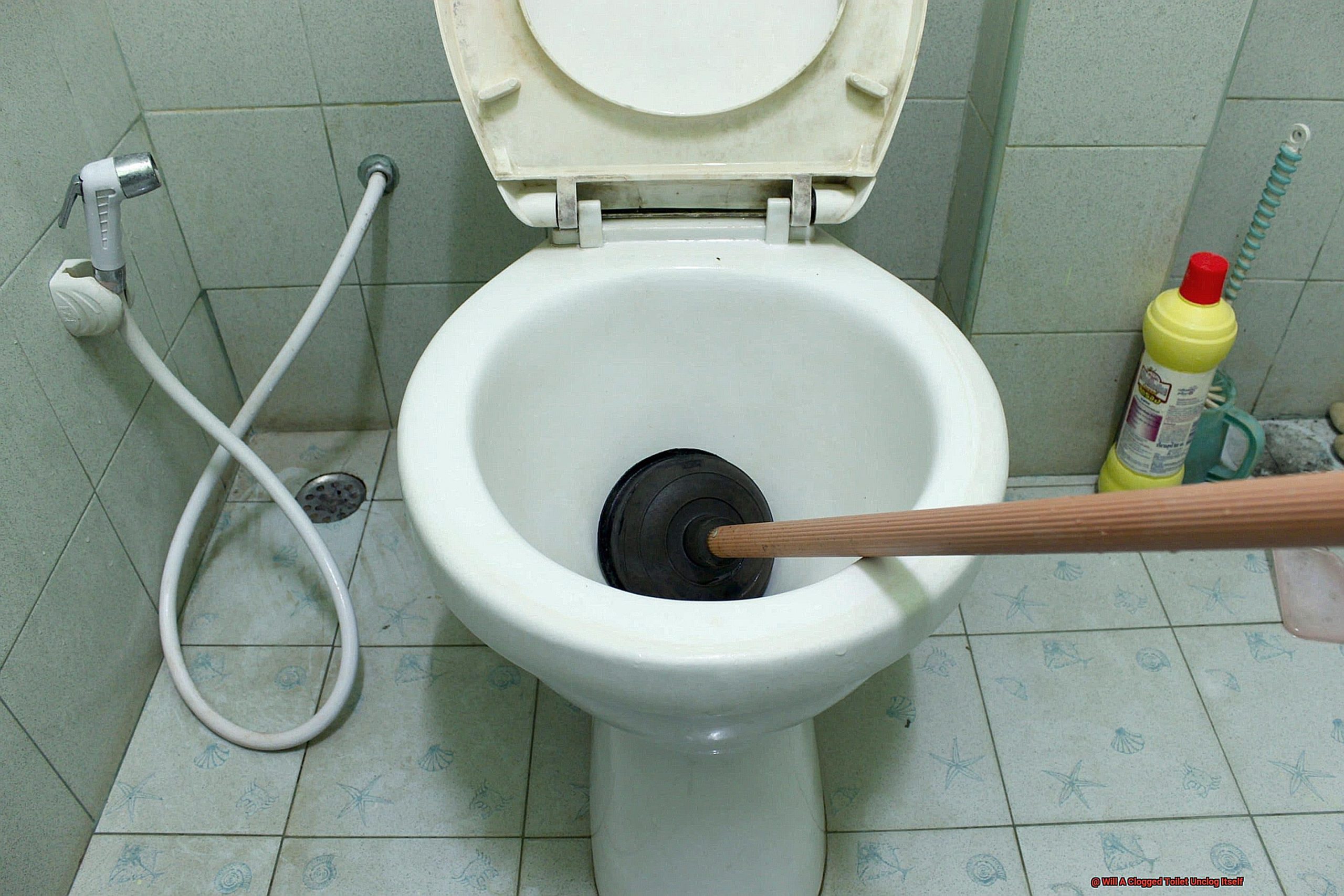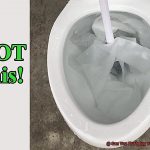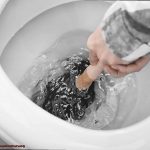Picture this: you’re going about your business when suddenly, disaster strikes. Your toilet is clogged and the water is rising at an alarming rate. Panic sets in as you frantically search for a solution. But what if we told you that there’s a chance your clogged toilet could unclog itself?
Now, before you start holding your breath and crossing your fingers, let’s get one thing straight – there’s no guarantee that a clogged toilet will magically fix itself. It all depends on the type of obstruction causing the blockage. If it’s just a wad of toilet paper or some other organic matter, there’s a chance it could dissolve or break apart over time. However, if you’re dealing with something more serious like a foreign object or feminine hygiene product, don’t count on it.
In this blog post, we’ll dive into the nitty-gritty of toilet drainage and explore the science behind different types of clogs. We’ll discuss whether leaving a clogged toilet alone is worth the risk or if taking action right away is your best bet. From plunging to drain cleaning chemicals, we’ll cover all the options available to help you unclog your throne.
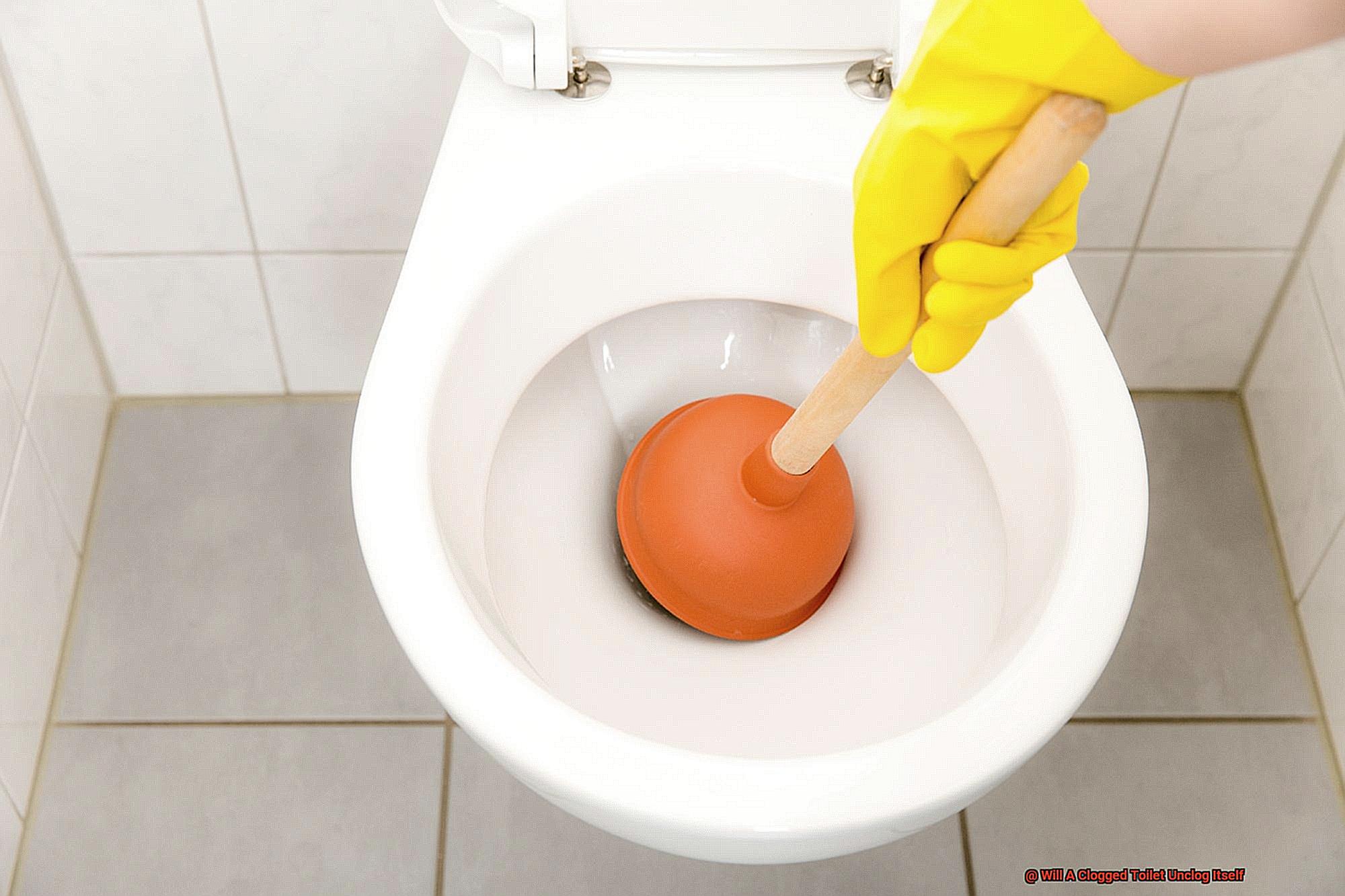
So buckle up and get ready for some potty talk – by the end of this article, you’ll have all the information you need to handle any clogged toilet situation with confidence.
Contents
What Causes a Clogged Toilet?
As someone who has researched this pesky problem, I can help you understand what causes a clogged toilet in the first place.
One of the most common reasons for a blockage is using too much toilet paper. While it may be tempting to use as much as you need, excessive amounts of toilet paper can clump together and create a blockage in your pipes. It’s like trying to shove too many clothes into a small suitcase – eventually, it won’t close.
Another frequent culprit is flushing non-flushable items down the toilet. This includes things like baby wipes, feminine hygiene products, and dental floss. These items do not dissolve in water and can quickly create a blockage in your pipes. It’s like trying to swim with a heavy backpack – you’re bound to sink.
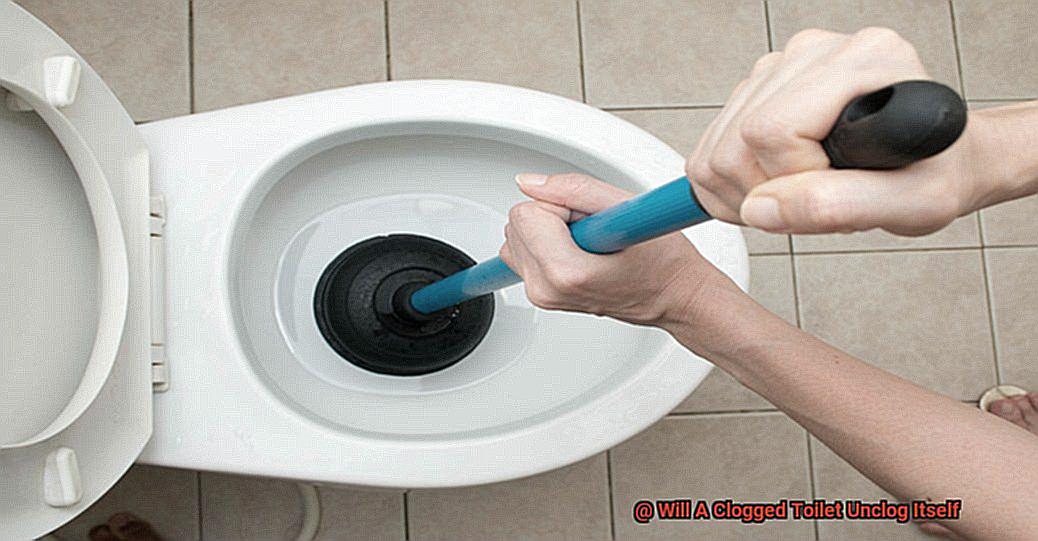
Occasionally, foreign objects can accidentally be dropped into the toilet bowl and cause a blockage. This might include toys, jewelry, or even cell phones. It’s like trying to fit a square peg into a round hole – it just doesn’t work.
Lastly, tree roots can grow into your sewer line and cause a blockage in your pipes. This is more common in older homes with clay pipes. It’s like a plant growing through concrete – it may seem impossible, but it can happen.
While some minor clogs may unclog themselves over time, it’s crucial to take action if the problem persists or worsens. Leaving a clogged toilet unattended for too long can lead to more serious issues like overflowing or backing up sewage into your home. So be proactive and fix the problem promptly by either plunging, using an auger, or calling in a professional plumber if necessary.
By understanding what causes a clogged toilet and taking the necessary steps to prevent and fix it, you can keep your bathroom functioning smoothly and avoid any unpleasant surprises.
Can a Clogged Toilet Unclog Itself?
We’ve all been there: you flush the toilet, and instead of watching the water smoothly swirl away, it stubbornly rises, threatening to overflow. But can a clogged toilet actually unclog itself over time, or do you need to take action?
Well, the answer is yes and no. If the cause of the clog is a small obstruction made of organic materials that can break down over time, such as excess toilet paper or feminine hygiene products, then it may be possible for the clog to clear up on its own. However, if the cause is something more solid or non-biodegradable, like a foreign object or mineral buildup, then it’s unlikely that the toilet will unclog itself.
It’s important to note that even if a clog does seem to clear up on its own, it’s still wise to investigate the cause and take steps to prevent future clogs from happening. This could include using less toilet paper, avoiding flushing non-flushable items, or installing a drain screen to catch debris before it goes down the drain.
But why take chances? Leaving a severe clog unaddressed for too long can lead to further damage and more difficult repairs. So be proactive in preventing clogs from occurring in the first place. Be careful about what you flush down the toilet – only human waste and toilet paper should go down there. And speaking of toilet paper, be mindful of how much you use.
When Might a Clogged Toilet Unclog Itself?
Well, the good news is that it’s possible, but it depends on the situation. Here’s what you need to know about when a clogged toilet might unclog itself.
If the blockage is caused by something that can break down over time, like toilet paper, and the blockage isn’t too severe, there’s a chance it may dissolve on its own. As long as there’s enough water in the bowl to help dissolve the paper, you just need to be patient and let time do its work. It’s like waiting for a traffic jam to clear – sometimes all you can do is wait.
Another scenario in which a clogged toilet may resolve itself is if there’s only a partial obstruction in the pipes. Water may still be able to slowly flow through the pipes and push the blockage further down until it clears. Think of it like a river flowing through rocks – over time, the water will be able to push through and clear the way.
However, it’s important to remember that even if a clogged toilet does eventually unclog itself, it’s still important to address the underlying issue. This means being mindful of what you’re flushing down the toilet and using tools like a plunger or drain snake to help clear any remaining debris in the pipes. It’s like cleaning up debris after a storm – being proactive can prevent future damage.
What Happens When You Leave a Clogged Toilet Unattended?
Leaving a clogged toilet unattended can lead to a series of unpleasant consequences that can cause significant damage and health hazards.
The first and most immediate consequence is that the toilet bowl will continue to fill up with water until it overflows. The overflowing water can potentially cause severe water damage to your bathroom floor, which can be costly to repair. Furthermore, if the overflowing water seeps into the subflooring, it can cause structural damage that may require extensive repairs.
As time passes, leaving a clogged toilet unattended can make things worse. The longer you wait, the harder it will be to fix the problem. Over time, the blockage can become more compacted and more difficult to remove. If the clog is caused by items like toilet paper or feminine products, they can become even more saturated with water and expand, making them even harder to remove.
Additionally, leaving a clogged toilet unattended can pose serious health hazards. Waste sitting in stagnant water for an extended period of time can release foul odors and harmful bacteria into your bathroom. These bacteria can potentially make you sick if you come into contact with them or breathe them in.
How to Unclog a Toilet
When it comes to unclogging a toilet, there is no one-size-fits-all solution. Depending on the severity of the clog and the tools you have at hand, you may need to use different methods to get the job done. In this post, we’ll cover five sub-sections that will explain how to unclog a toilet using various tools and techniques.
The Power of Plunging: Clearing Clogged Toilets with a Plunger
Plunging is one of the most common and effective methods for clearing a clogged toilet. However, not all plungers are created equal. Make sure you’re using a plunger designed specifically for toilets, as it will create more suction than a sink plunger.
To use a plunger on a clogged toilet, start by making sure there is enough water in the bowl to cover the rubber end of the plunger. Place the plunger over the drain hole in the bottom of the bowl and press down firmly, then pull up quickly to create suction. Repeat this motion several times until the blockage is dislodged.
Snaking Your Way to Success: Using a Plumbing Snake to Unclog Toilets
If plunging doesn’t work, your next step should be to try using a plumbing snake or auger. This long, flexible tool can be inserted into the toilet drain to break up and remove any blockages. Insert it into the drain and rotate it gently until you feel resistance. Then, push and pull the snake back and forth until the blockage is dislodged.
Be careful not to force the snake too far into the pipe, as this can cause damage. Also, wear gloves and eye protection as you never know what kind of substances you may come into contact with.
Removing Blockages by Removing the Toilet
In some cases, plunging and snaking may not be enough to clear a stubborn clog. If you’re not comfortable removing your toilet or if plunging and snaking have failed, it’s time to call in a professional plumber. They have the tools and expertise to remove the blockage safely and efficiently.
Professional Plumbing Services
While some minor clogs may resolve themselves over time, more serious blockages require the help of professional plumbing services.
Not only do plumbers have specialized tools and equipment designed to tackle the most stubborn clogs, but they also possess the knowledge and expertise necessary to diagnose and fix any underlying issues contributing to the problem. From mineral buildup to sewer line issues, they can identify and provide long-term solutions for a variety of plumbing problems.
One of the biggest advantages of hiring a professional plumber is their ability to prevent further damage to your plumbing system. Attempting to fix a clogged toilet on your own can lead to unintentional damage, such as cracked pipes or leaks. By entrusting the job to professionals, you can rest easy knowing that your plumbing system will remain in good condition.
CgJ5MlXhw8M” >
Conclusion
In conclusion, while there is a slim chance that a clogged toilet could unclog itself, it all depends on the type of obstruction causing the blockage. If it’s just excess toilet paper or some other organic matter, there’s a chance it could dissolve or break apart over time. However, if you’re dealing with something more serious like a foreign object or feminine hygiene product, don’t count on it. It’s crucial to take immediate action if the problem persists or worsens to prevent further damage and potential health hazards.
To avoid clogs from happening in the first place, be mindful of what you’re flushing down the toilet and use tools like a plunger or drain screen to help catch debris before it goes down the drain. In case of severe clogs, use methods such as plunging or snaking to remove the blockage. And when all else fails, don’t hesitate to call in professional plumbing services.
Remember that leaving a clogged toilet unattended can lead to unpleasant consequences such as water damage and health hazards. So be proactive in preventing and fixing clogs promptly. By following these tips and being prepared for any situation, you can keep your bathroom functioning smoothly and avoid any unpleasant surprises.

